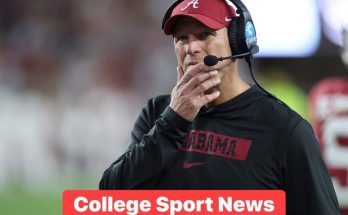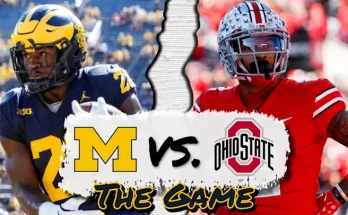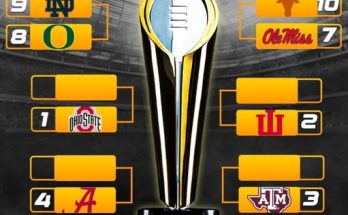An Unparalleled Set of Circumstances Surrounding the Alabama Crimson Tide vs. Auburn Tigers Rivalry
The rivalry between the Alabama Crimson Tide and the Auburn Tigers is one of the most heated and storied in college football. Known as the “Iron Bowl,” this annual matchup has captivated fans for over a century, with both teams vying for supremacy in the state of Alabama and the Southeastern Conference (SEC). While the rivalry has always been intense, recent developments have set the stage for a future where the stakes for this game could be higher than ever before. From an evolving college football landscape to new dynamics in recruiting, coaching, and talent acquisition, the 2025 Iron Bowl and beyond promise to bring an unparalleled set of circumstances that will make this rivalry more unpredictable and fascinating than ever.
The Deep-Rooted Rivalry: Alabama vs. Auburn
Before exploring the future of the Alabama vs. Auburn rivalry, it’s important to understand its history. The Iron Bowl is often regarded as one of the most intense rivalries in all of sports. The roots of the rivalry stretch back to 1893, when Alabama and Auburn first faced off on the football field. Since then, the two programs have met annually, except for a few notable interruptions during World War I and World War II. These two schools, located just 150 miles apart in the heart of Alabama, represent the state’s pride and passion for college football.
What makes the rivalry especially unique is the deep division it causes within the state. For many Alabamians, their loyalty to either the Crimson Tide or the Tigers defines their college football allegiance. This makes the Iron Bowl not only a game of football but also an event that has a far-reaching cultural impact, with personal, familial, and even professional stakes tied to the outcome.
Alabama has historically been the stronger program, particularly under head coach Nick Saban, who has led the team to multiple national championships since taking over in 2007. Saban’s dominance, particularly in recruiting and player development, has ensured that the Crimson Tide remain a perennial contender for the College Football Playoff. However, Auburn has had its moments of glory, including a national championship in 2010, and a thrilling victory over Alabama in the 2013 Iron Bowl that is still talked about as one of the most dramatic finishes in college football history.
These periodic upsets, combined with Auburn’s rich history and fierce fan base, make this rivalry unpredictable and captivating each season.
The Current Landscape: Alabama’s Continued Dominance and Auburn’s Resurgence
At the time of writing, Alabama remains one of the premier programs in college football, and its recruiting class is routinely among the nation’s best. The hiring of Nick Saban in 2007 revolutionized Alabama football, leading to a dynasty that has redefined what it means to be a college football powerhouse. Under Saban, Alabama has captured seven national championships, produced countless NFL draft picks, and maintained a standard of excellence that has set the bar for college football programs across the nation.
On the other hand, Auburn has had its ups and downs over the years. Since its 2010 national championship win, the Tigers have experienced coaching changes, program instability, and moments of inconsistency. However, in recent years, Auburn has begun to re-establish itself as a contender under the leadership of head coach Hugh Freeze. Freeze, who took over as Auburn’s head coach in 2023, has already made significant strides in rejuvenating the Tigers’ program. His offensive-minded coaching style, combined with his ability to recruit high-level talent, positions Auburn as a team that could soon return to its former glory.
What makes this situation particularly intriguing is the timing of these developments. While Alabama continues to dominate college football under Saban, Auburn is experiencing a resurgence with a new head coach and a renewed sense of purpose. The rivalry between these two programs, already one of the most intense in the sport, is set to take on new dimensions as Auburn closes the gap with Alabama in terms of competitiveness and national relevance.
The Shifting Recruiting Landscape: The Impact of NIL and the Transfer Portal
In the past, Alabama’s dominance in the rivalry was largely attributed to its superiority in recruiting. The Crimson Tide consistently attracted some of the best high school prospects in the country, a trend that began with Saban’s arrival and continues today. Alabama’s ability to land elite talent in virtually every position has been a key factor in its sustained success.
However, the recruiting landscape has changed dramatically in recent years, particularly with the introduction of the Name, Image, and Likeness (NIL) rules and the expansion of the transfer portal. These changes have leveled the playing field, giving programs like Auburn new opportunities to compete with Alabama for top recruits and transfers.
NIL, which allows college athletes to profit from their name, image, and likeness, has created new dynamics in recruiting. Schools with larger fanbases, financial resources, and institutional backing are able to offer players lucrative endorsement deals, giving them an incentive to choose one program over another. While Alabama has certainly capitalized on NIL, Auburn has also embraced the new system, and this could be a key factor in the future of the rivalry. Both schools will be vying for top talent, not only in high school recruiting but also through the transfer portal, which has become an increasingly important avenue for building competitive rosters.
As both teams navigate the evolving NIL landscape, the potential for greater parity in talent acquisition is immense. The ability for Auburn to attract high-profile transfers and recruits who may have previously chosen Alabama could shift the balance of power in the rivalry. This is particularly true as Auburn looks to build its own roster of future NFL prospects, seeking to challenge Alabama’s dominance in the years ahead.
The Coaching Factor: Nick Saban vs. Hugh Freeze
While recruiting and roster management are crucial components of college football success, coaching remains one of the most important factors in determining the outcome of games—particularly when it comes to high-stakes rivalry matchups. Nick Saban has been the face of Alabama football for over 15 years and is widely regarded as one of the greatest college football coaches of all time. His ability to adapt, recruit, and develop players has set Alabama apart from most programs. Saban’s dominance in the Iron Bowl, particularly in recent seasons, has reinforced Alabama’s status as the gold standard in college football.
However, Auburn’s hire of Hugh Freeze in 2023 has introduced an exciting new dynamic to the rivalry. Freeze is known for his offensive acumen, having built successful offenses at previous stops, including at Ole Miss. His ability to recruit high-level talent and bring out the best in his players will be key to Auburn’s efforts to knock off Alabama in the near future.
Freeze has already begun to make an impact at Auburn, bringing in new coaching staff and focusing on revitalizing the team’s offensive identity. His style of play, which is known for its up-tempo, pass-heavy schemes, could provide a stark contrast to the more balanced, ground-and-pound approach that Saban has employed at Alabama. This difference in philosophy will make the Iron Bowl in the coming years even more intriguing, as it pits two highly respected coaches—one with a legacy of dominance, the other with a fresh approach—against each other.
As Freeze continues to develop his program, it’s possible that Auburn will challenge Alabama’s supremacy, making their annual showdown even more dramatic and consequential.
The Future of the Iron Bowl: National Championship Implications
One of the most significant factors that could contribute to an unparalleled set of circumstances surrounding the Alabama vs. Auburn rivalry is the shifting landscape of the College Football Playoff (CFP). With the CFP expanding to 12 teams in 2024, the implications of rivalry games like the Iron Bowl are heightened. In the past, the Iron Bowl could often determine the SEC Championship or, at the very least, the positioning of both teams within the playoff race. With the new playoff format, the stakes of this game could be even higher, as both teams may find themselves fighting for a spot in the expanded CFP.
This change introduces new potential scenarios where the Iron Bowl could serve as a de facto playoff elimination game, a final chance for one team to punch its ticket to the postseason while sending the other home. Given the rising competitiveness of the rivalry, particularly with Auburn’s resurgence under Freeze, the Iron Bowl could soon feature two teams with high stakes on the line, creating an even more electrifying atmosphere.
The Broader Implications for College Football
The significance of the Alabama vs. Auburn rivalry extends far beyond the state of Alabama. The outcome of this game often has wide-reaching consequences for the Southeastern Conference and the broader college football landscape. As both teams continue to compete for SEC and national titles, their rivalry will only grow in importance.
With Alabama continuing to dominate the recruiting landscape and Auburn making strides under new leadership, the stage is set for an exciting future in this rivalry. The implications of this game are not limited to bragging rights, as they could soon have major playoff and championship ramifications. As the college football world evolves, so too will the rivalry between Alabama and Auburn, and it’s clear that the best is yet to come.


